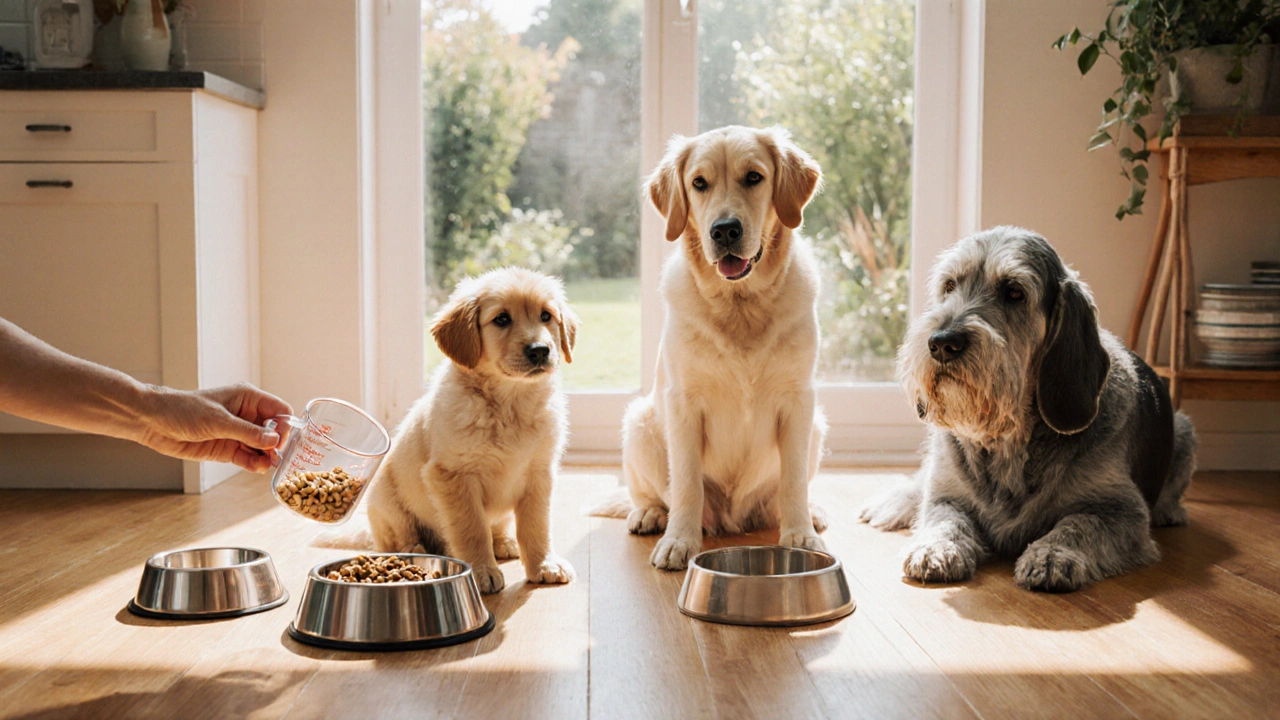Dog Meal Times: How to Plan, Feed, and Keep Your Pup Healthy
When planning dog meal times, the specific periods you feed your dog each day, owners should think about dog feeding schedule, a structured plan that outlines morning, midday and evening meals, nighttime feeding, the last meal of the day that can affect sleep patterns, and overall dog nutrition, the balance of protein, fats, carbs, vitamins and minerals a dog needs. Dog meal times encompass feeding schedules, influence digestion, and shape behavior, so a clear plan makes life easier for both you and your canine.
Why a Consistent Feeding Schedule Matters
A regular dog feeding schedule improves digestion by training the gut to expect food at set intervals. When meals are predictable, the stomach empties at a steady rate, reducing gas and bloat risk. Consistency also stabilizes blood sugar, which helps avoid hyper‑active bursts after a big snack. In practice, feeding at 7 am, 12 pm and 6 pm works for most adult dogs, but you can shift the times to match your routine as long as the gaps stay even. This simple habit links directly to healthier skin, shinier coats, and better mood.
Age plays a big role in how you slice the day. Puppies need more frequent, smaller meals because their metabolisms run fast and their stomachs are tiny. A 12‑week pup might eat four times a day, while a senior dog can handle two larger meals. Adjusting portion size while keeping the schedule steady prevents weight swings and supports growth in young dogs. The key is to watch body condition and tweak the amount, not the timing.
Nighttime feeding deserves special attention. The last meal of the day sets the tone for your dog's sleep. A light, protein‑rich dinner about two hours before bedtime helps keep energy steady through the night without causing a full‑bladder surge. Some owners add a small snack of cottage cheese or a dental chew to promote oral health while satisfying a night‑time nibble urge. Just avoid heavy, fatty foods late at night, as they can trigger indigestion and restless sleep.
Nutrition basics are the foundation of any meal‑time plan. High‑quality protein should make up at least 20% of the diet for most breeds, with healthy fats providing energy and supporting brain function. Carbohydrates can be useful for active dogs, but too many grains may lead to weight gain. Wet food adds moisture, which helps dogs that drink little water, while kibble offers convenience and dental benefits. Mixing wet and dry foods in the right ratio gives variety and balances nutrient intake.
Free feeding—leaving a bowl out all day—seems easy but often leads to overeating and obesity. Studies show dogs with unrestricted access tend to gain weight faster than those on scheduled meals. Switching to measured portions at set times gives you control over calorie intake and makes it easier to spot appetite changes that could signal health issues.
Activity level is another factor that shapes meal timing. A working dog or a high‑energy breed like a Border Collie may need an extra mid‑day snack to sustain stamina, while a couch‑potato Labrador might be fine with three meals. Adjust portions proportionally: increase protein and carbs on active days, and trim back on rest days. This flexible approach keeps energy levels stable without overfeeding.
Health conditions such as diabetes, kidney disease, or food allergies require tailored meal schedules. Dogs with diabetes benefit from consistent carbohydrate timing to avoid spikes, while kidney‑support diets often call for smaller, more frequent meals to reduce toxin buildup. If your vet has prescribed a special diet, follow the recommended feeding times exactly; even a few hours off can affect medication absorption and overall health.
Technology can make meal‑time management painless. Automatic feeders let you schedule portions down to the minute, which is handy for busy households or multi‑dog homes. Portion‑control bowls help track how much your dog eats each meal, reducing the guesswork. Pair these tools with a simple log—note the time, amount, and any behavior changes—to fine‑tune the plan over weeks.
Below you’ll find a curated collection of articles that dive deeper into each of these topics. From airline travel tips for dogs to the science behind pumpkin side effects, the posts cover everything you need to master your dog’s daily routine. Explore the guides, pick the tips that match your pup’s lifestyle, and start building a feeding plan that keeps your dog thriving.
Posted By Bryndle Redding On 16 Oct 2025 Comments (0)
How Often Should You Feed Your Dog Each Day?
Learn the right number of meals to feed your dog each day based on age, size, activity and food type, plus practical tips, calorie formulas, and common pitfalls.
READ MORE